On the occasion of the 100th anniversary of Clos Clocher, La Tulipe Rouge was invited to a legendary vertical tasting at the Château. This was a chance to revisit this discreet yet dynamic gem of Pomerol.

A century ago, in 1924, Jean-Baptiste Audy acquired superb parcels of land at the foot of the Pomerol church. When he looked up at the sky, he saw the bell tower rising above the plateau’s vineyards, of which he was now the owner. The name of his estate then became obvious: it would be Clos du Clocher. For a hundred years, this Clos has been dedicated, with unwavering consistency, to producing a wine that expresses the full singularity of this terroir of gravel and blue clay. This geological blend quickly established Cabernet Franc in the Pomerol blend, at a time when Merlot was king. This singularity has now become a strength, as we will see in the vertical tasting from 1947 to 2022, organized for the estate’s centenary.
From the mountains to the vinevards
At the end of the 19th century, many people from Corrèze, faced with the poverty of their land and unproductive agriculture, migrated temporarily or permanently to the Gironde. Their aim was to benefit from the dynamism of the Bordeaux wine trade, already recognized as a showcase of French excellence.
The movement began mainly in northern Corrèze, especially around Meymac, with departures facilitated by the Dordogne River, which links the two regions. Corréziens, often from farming backgrounds, presented themselves as merchants or sons of Bordeaux winegrowers, sometimes using small tricks to inspire confidence in their clients. They sold wines purchased in Gironde, then marketed them in northern France, Belgium, and Luxembourg, developing a solid commercial network.
Their commercial approach was innovative: selling by the barrel, offering free credit, door-to-door canvassing, participating in many fairs, and creating depots in Brussels to facilitate sales rounds. Corrézien solidarity was strong: business addresses were sometimes fictitious, families helped each other, and some gradually settled in Gironde, investing in wine estates. This trade became a growth driver for Corrèze (financial contribution) and for Gironde (expansion of the distribution network).
Jean-Baptiste Audy perfectly embodies the success of Corréziens who settled in Gironde at the end of the 19th century to become wine merchants. From a Corrèze family established in Entre-deux-Mers since 1881, he founded his own négociant house in Libourne in 1906, on the Quai du Priourat, the historic heart of the Bordeaux wine trade. From the start, Jean-Baptiste Audy structured and developed the business his parents had started, relying on a strong network and the purchase of renowned wine estates, notably Clos du Clocher in Pomerol, acquired in 1924, and Château du Courlat in Lussac Saint-Émilion.
Olivier Bourotte also belongs to this family line. Through the marriage of his parents, Germaine Audy and a member of the Bourotte family, two great Corrézien and Pomerol families were united. Olivier’s parents notably developed Château Bonalgue in Pomerol, acquired in 1926, contributing to the growth of the family estates in the Libournais.
The grandson of Jean-Baptiste Audy, Pierre Bourotte played a central role in the history of the négociant house and the family estates. At just 18, he took over the management of the various vineyards, instilling a drive for quality that would leave a lasting mark on the properties’ identity for over 40 vintages. Under his leadership, the family business consolidated its presence in Pomerol, Saint-Émilion, and Lussac.
After studying business (HEC) and an international career with jeweler Cartier, Jean-Baptiste Bourotte, great-grandson of Jean-Baptiste Audy and son of Pierre Bourotte, returned to his roots in 2003. Two years later, he took over Maison Audy and the family estates, including Clos du Clocher (Pomerol), Château Bonalgue (Pomerol), Château du Courlat (Lussac-Saint-Émilion), Château Les Hauts-Conseillants (Lalande de Pomerol), and Château Montregard la Croix (Pomerol).
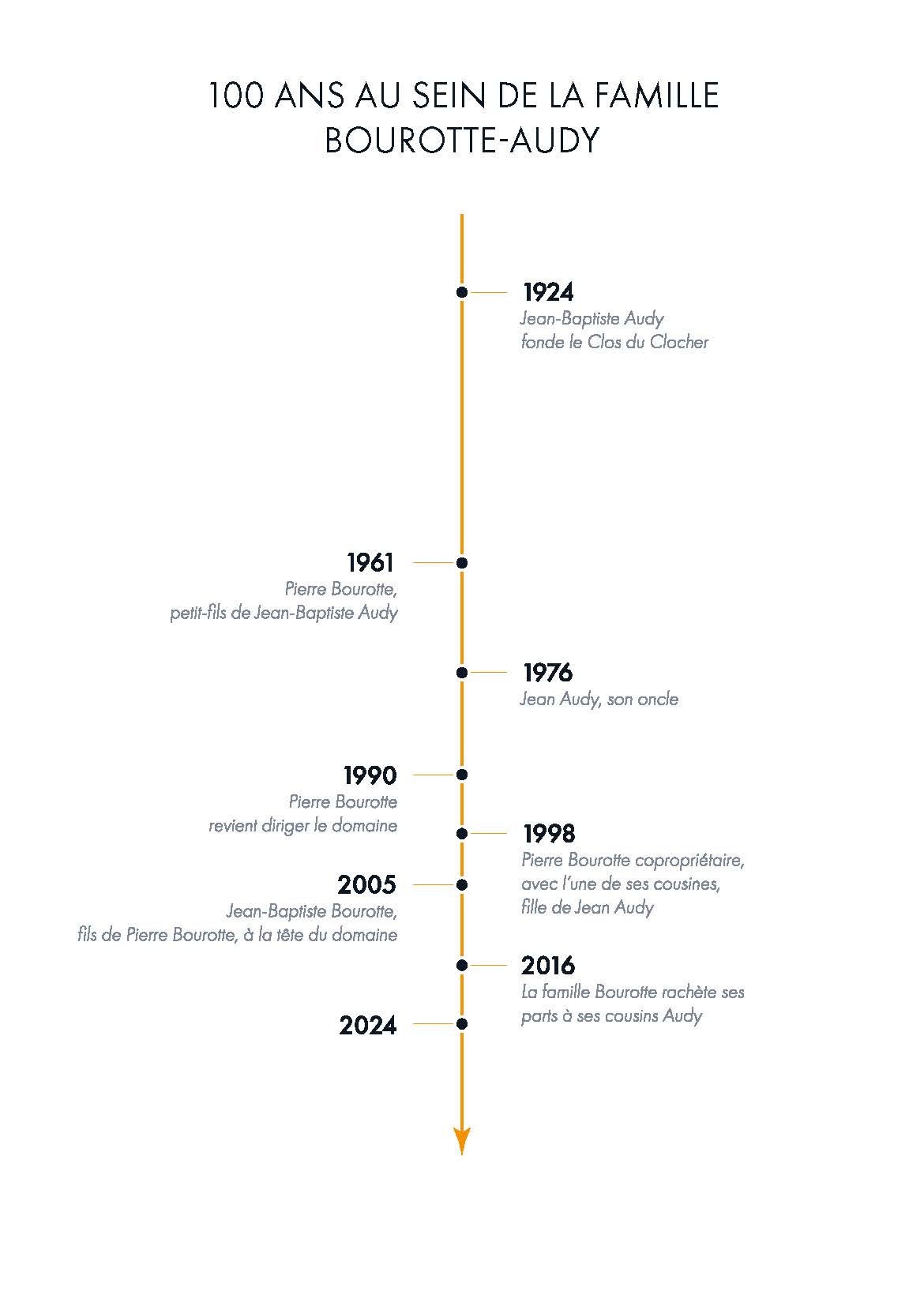
The magic of the plateau
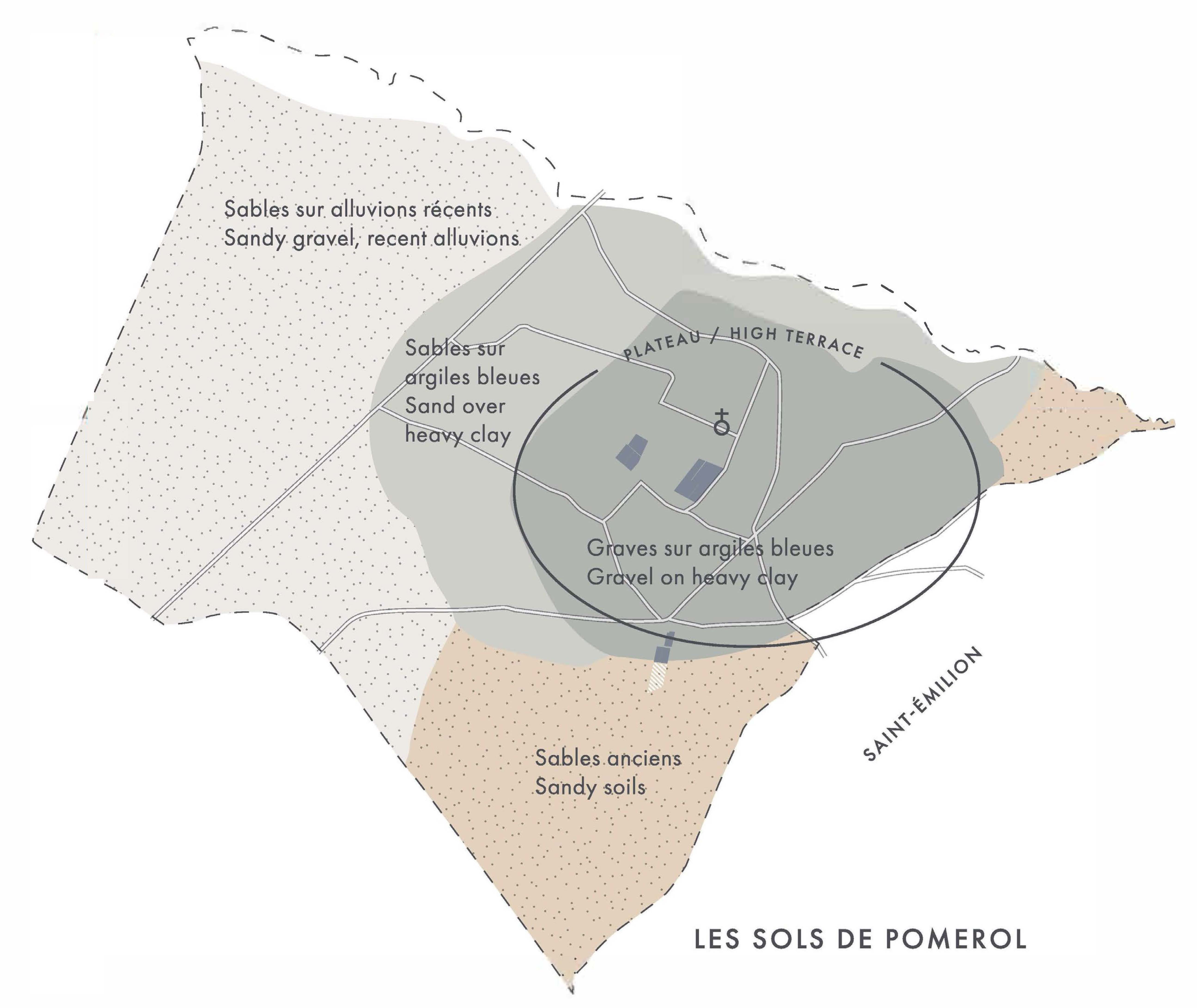
Within the appellation, most soils are characterized by the presence of gravel on the surface or in the subsoil. That said, there are very clay-rich layers beneath the gravel, especially on the Haut-Plateau, where the Cos du Clocher vineyard is located (see map above). These can be close to the surface (from 50 cm) and contain up to 60% of elements smaller than 2 microns (a silty-clay soil above compact blue clay). In these compact soils, roots can reach more than a meter deep, but at depth, between the prisms, the fine roots are flattened and necrotic.
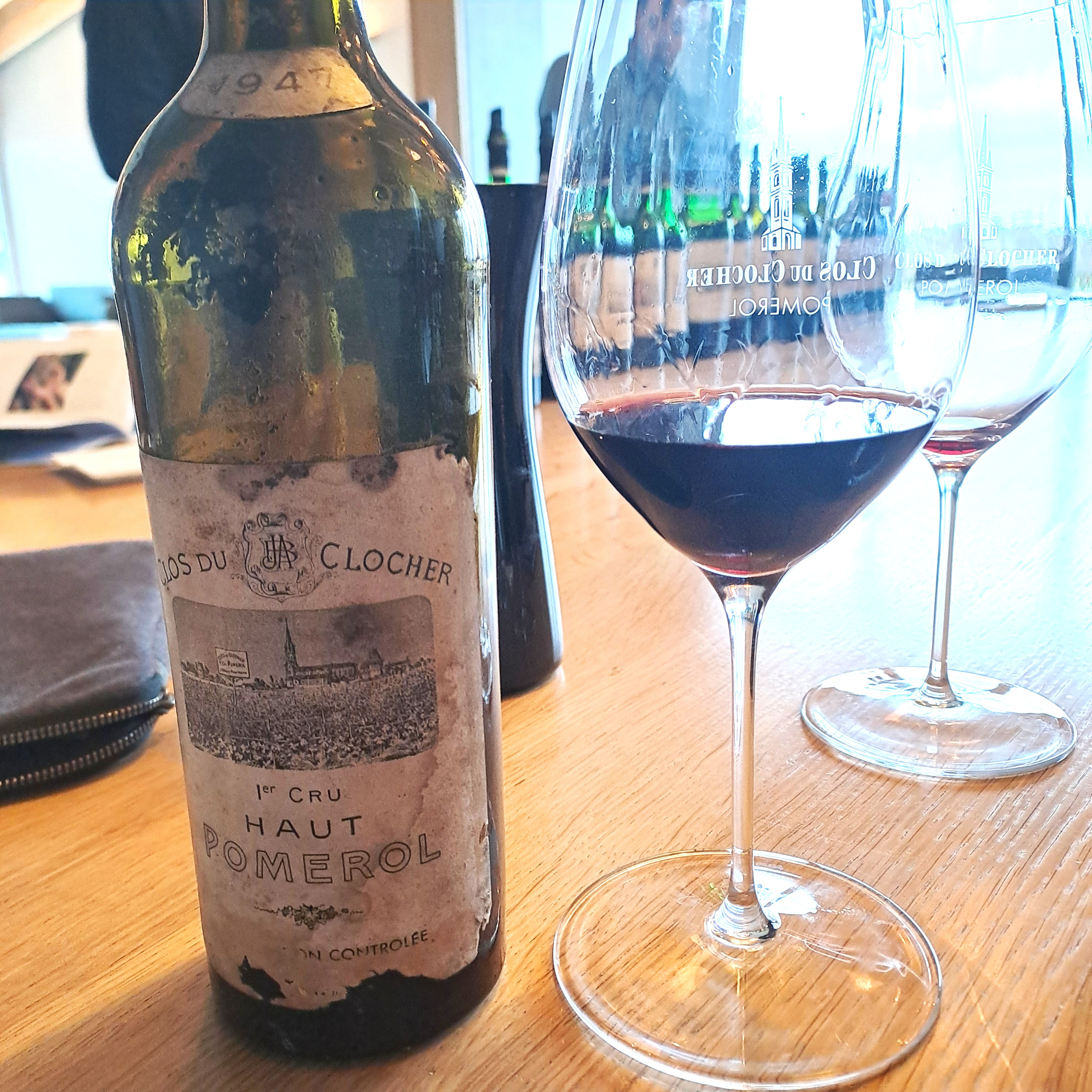
The 1947 label indicating "1er Cru Haut Pomerol"
Blue clays, technically called smectite clays, are very fine, swelling clays dating back about 40 million years. They were formed by the degradation of limestone and are rich in minerals, especially iron, which sometimes gives them a bluish or black color—hence the nickname “crasse de fer” (iron grime).
Smectite is a so-called “swelling” clay: it can absorb and retain large quantities of water between its layers, allowing it to expand like a sponge. This property is essential for the vine: during summer droughts, smectite gradually releases stored moisture, thus maintaining a regular water supply for the roots. Conversely, during rainy periods, the density and impermeability of the clay limit excess water around the roots, though good natural or artificial drainage is sometimes needed. This type of clay imposes moderate water stress on the vine, considered ideal for producing great red wines, as it promotes concentration of aromas and tannin ripeness. This unique terroir, centered around the Pomerol plateau, is found almost nowhere else in the wine world, and it is precisely that of Clos du Clocher.
From vine to wine
The Pomerol terroir covers 813 hectares (just 0.7% of Bordeaux’s vineyard area). The grape composition is roughly 80% Merlot, 15% Cabernet Franc, and 5% Cabernet Sauvignon. At Clos du Clocher, since 1998 and the transfer of one hectare of Merlot to Château Montregard la Croix, 30% of the blend for the grand vin comes from seventy-year-old Cabernet Franc vines. These are the result of mixed planting in 1957, just after the 1956 frost. This is an unusual situation, partly explained by some gravel parcels, but also by a desire to prioritize quality over the typical “Pomerol” varietal style dominated by Merlot.
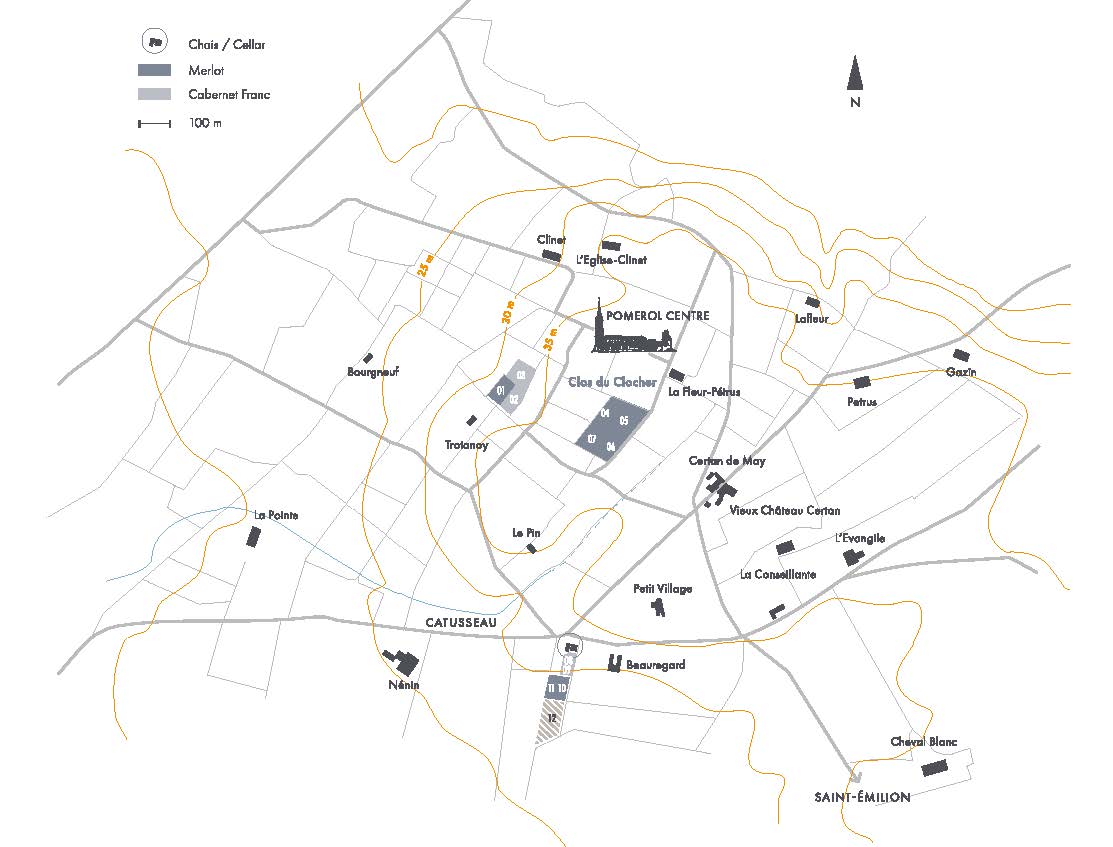
Since 2021, the estate has been committed to organic farming, drawing inspiration from biodynamics (infusions, plant extracts, essential oils, etc.). The soils are naturally grassed or sown with oats and clover. Supplemented with compost, this practice structures the soils and provides minerals. It also offers greater protection from climate hazards and erosion, thus preserving the soils’ future.
Intra-parcel selection, manual harvesting, density sorting—everything is done to harvest the best each year. In the cellar, fermentations are carried out without added sulfur, using indigenous yeasts. Ageing is done in French oak barrels and wineglobes (glass containers) to reduce the influence of wood and preserve the fruit. At bottling, the wine is protected from oxygen, sulfur doses are kept to a minimum, and corks are guaranteed TCA-free (no cork taint). From respect for life to the most rigorous bottling, and through respect for the raw material, Clos du Clocher is firmly in step with its time.
The vertical tasting
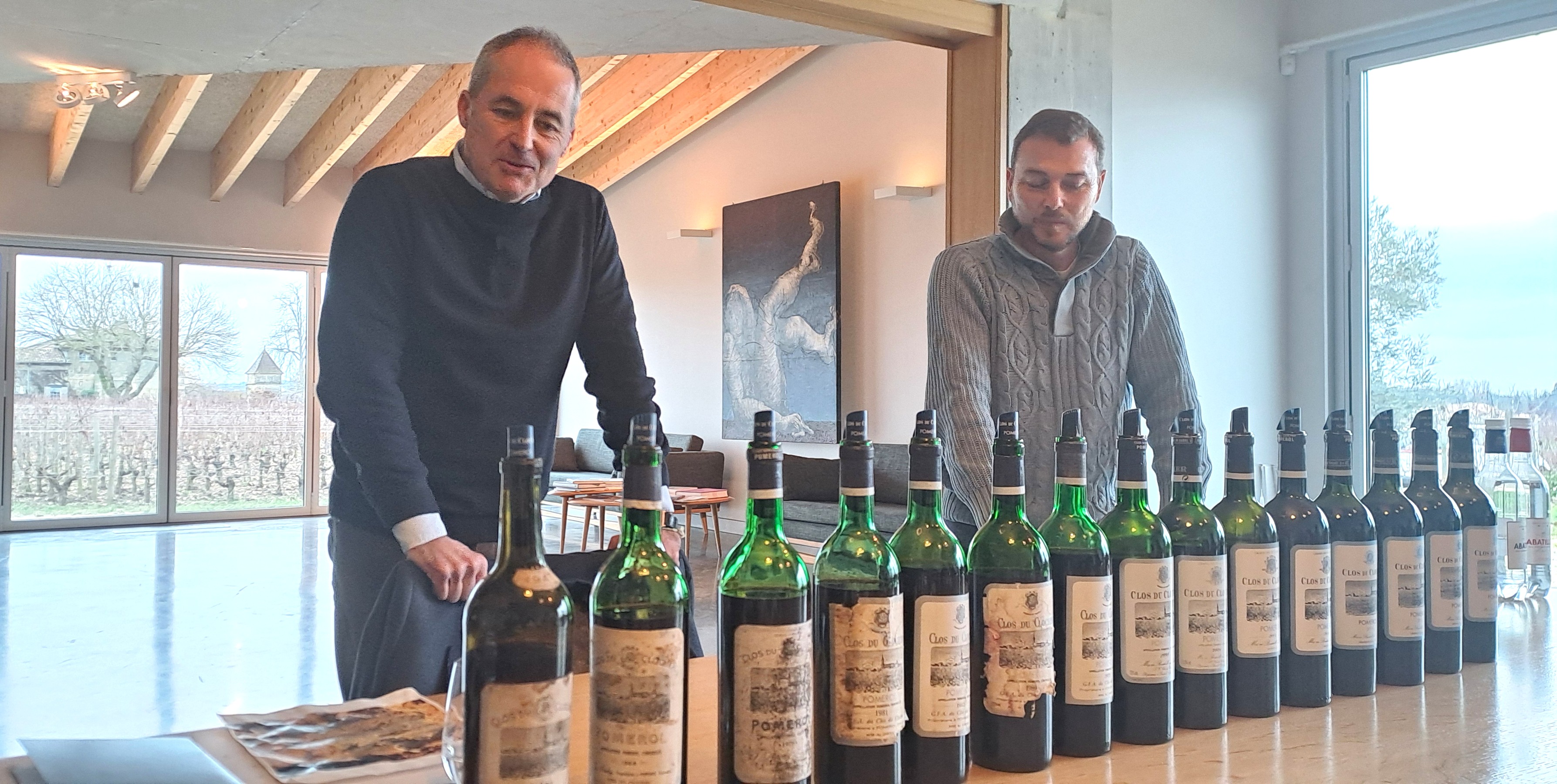
Jean-Baptiste Bourotte (on the left) et Mathieu Bonté (technical director on the right) in front of 100 years of history
The whole vertical tasting HERE
2010–2024: These vintages illustrate the increased precision, finesse, and complexity that have marked the late 2010s at Clos du Clocher. The vineyard’s conversion to organic farming (2024 being the first certified vintage), the pursuit of optimal ripeness, gentler extractions, and refined ageing are all subtle evolutions that reveal brilliant, incisive wines.
Clos du Clocher 2024
1998–2009: Powerful and generous vintages in a decade that foreshadowed the climatic challenges facing viticulture. This was the era of leaf thinning, green harvesting, and riper grapes, in pursuit of a more opulent style after the classic period. The wines are structured, less oaky, and their finish offers a lovely menthol lift, notably thanks to the increasing prominence of Cabernet Franc.
1982–1997: The 1980s marked a decisive turning point: the mastery of modern oenology advanced, Emile Peynaud paved the way for skilled technicians, and Bordeaux produced some outstanding wines.
1924–1981: Vintages that pay tribute to the terroir of Clos du Clocher and the Bourotte-Audy family of winegrowers, who managed to produce wines of character and great aging potential at a time when oenology was in its infancy. These wines have retained, with power and freshness, an already refined balance
